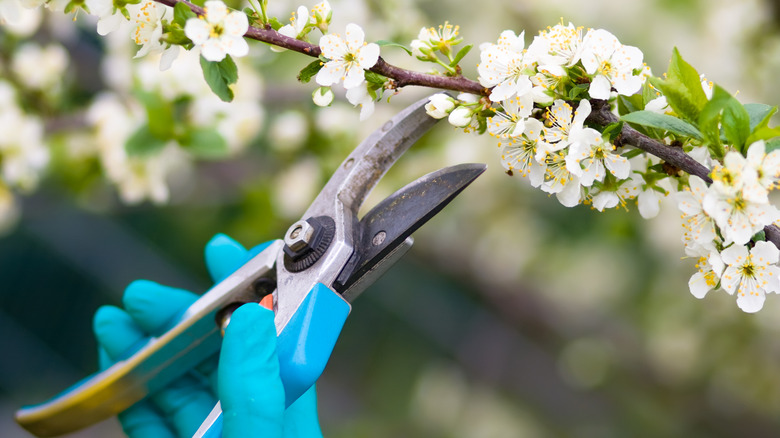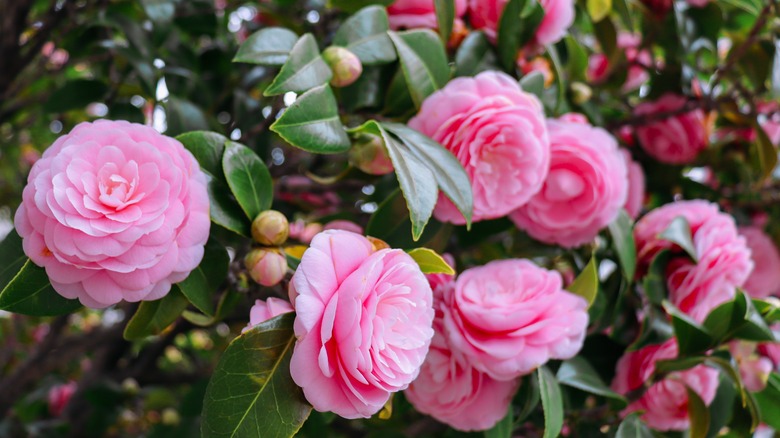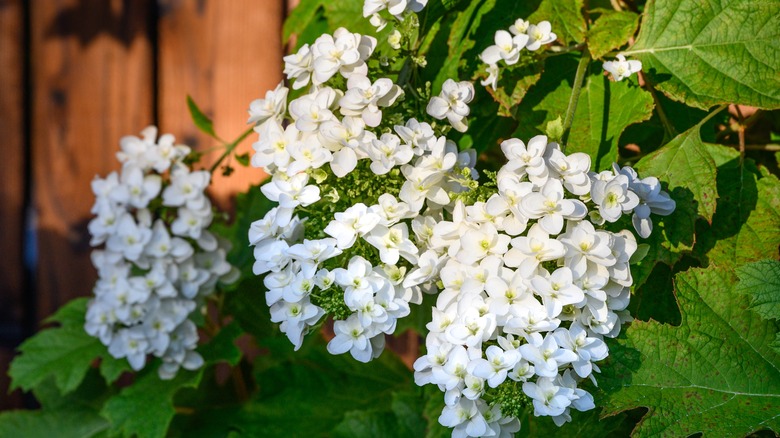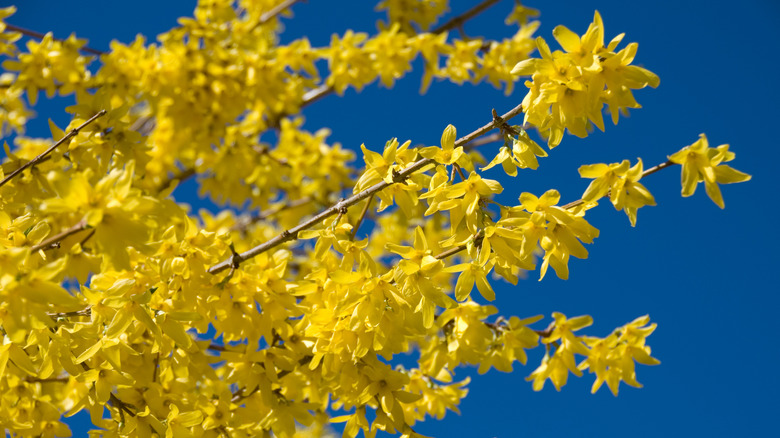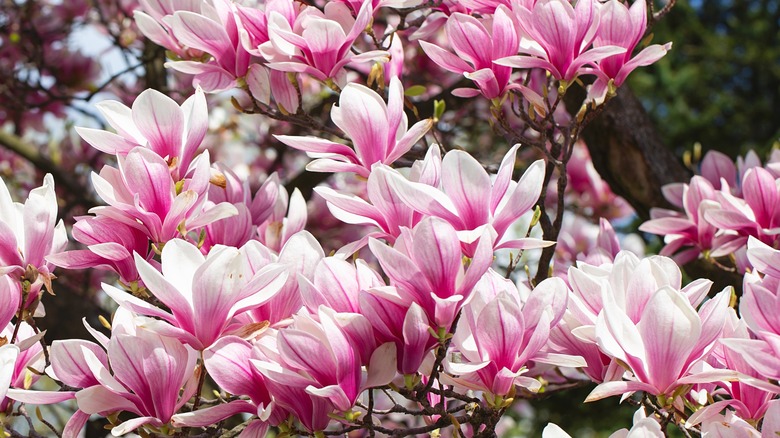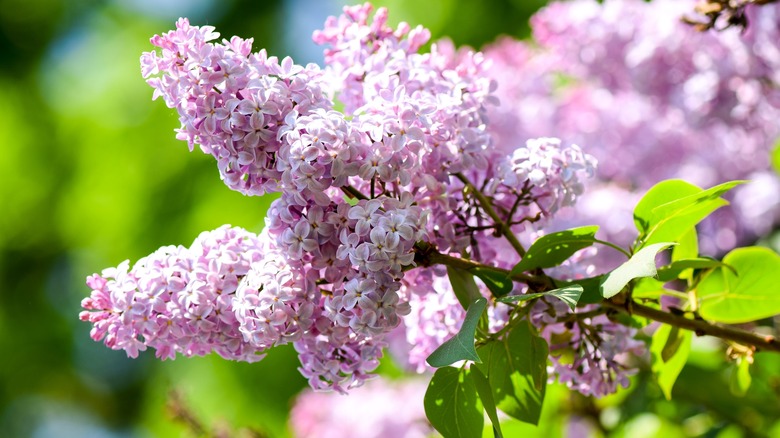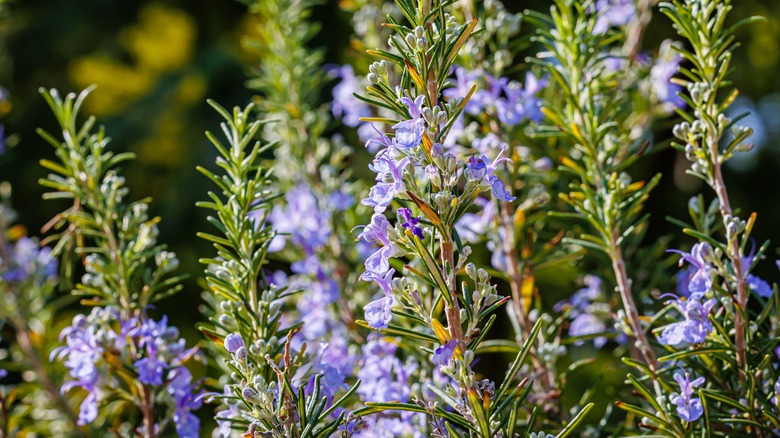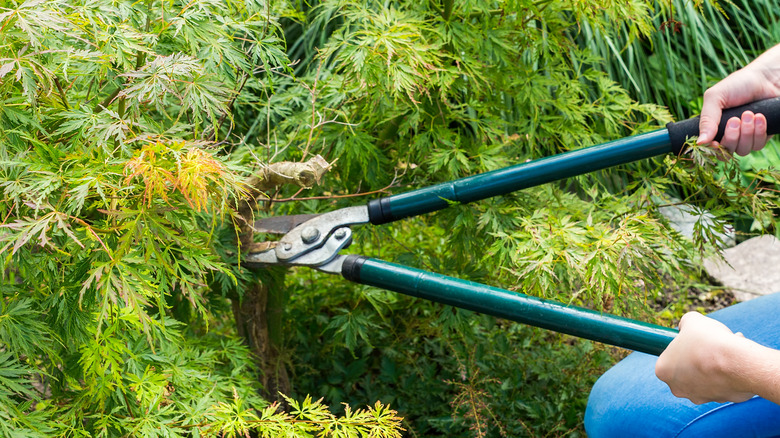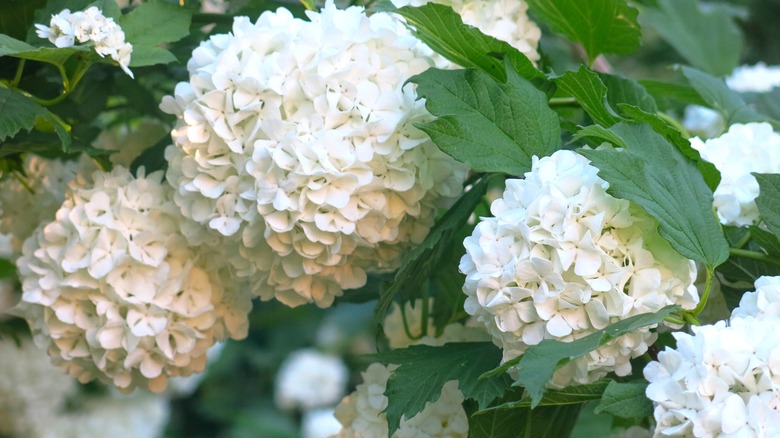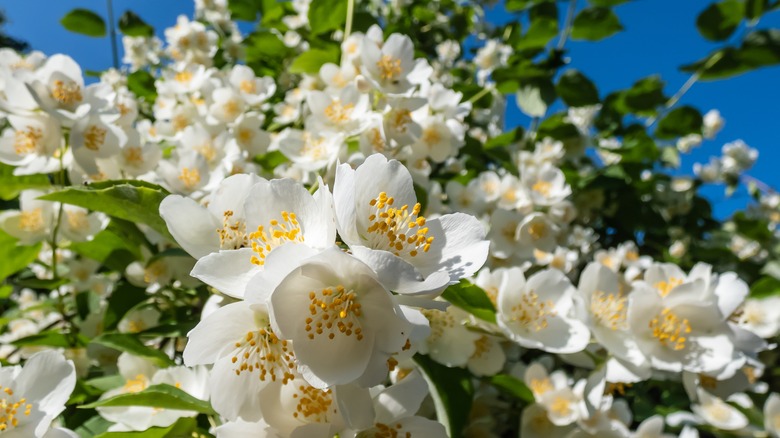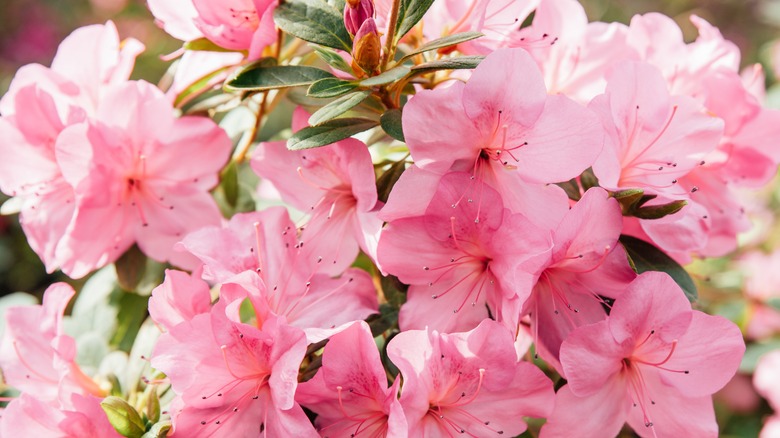10 Plants You Shouldn't Be Pruning In Early Spring (And When To Do It Instead)
We may receive a commission on purchases made from links.
When the weather starts to pick up and we are eager to get outside it can seem like an ideal opportunity to whip the garden back into shape. Though this can be a good time to get your garden ready for spring with a range of outdoor chores and activities, pruning may not be one of them. Not all flowering plants set buds at the same time, so you need to pay attention to the type of plants you're caring for before you get busy with the garden shears. Some plants, such as roses and evergreens, produce flowers on new growth. This means cutting them back in early spring will actually encourage blooming because it will trigger new wood to grow from which flowers will appear.
However, early spring pruning can be harmful for many types of plants, such as those that produce flowers on old wood or bloom at the start of the season. For these garden stars, you'll need to prune them later in the spring or hold off until later in the year to avoid interrupting flower production. Plants like magnolias, lilacs, and camellias adorn the garden with beautiful blossoms just as the weather starts to improve, often as early as March and April. Cutting back the plants during this time would obviously be a mistake. Here we explore ten plants you shouldn't be pruning in early spring and reveal the best times you can get snippy with them.
Camellia shrubs bloom early in the season
Camellias are easy-care evergreen shrubs that produce glossy green leaves and intricate flowers in shades of pink, white, and red. They bloom in late winter and early spring, adding beauty and color to the garden when very few other plants are in flower. Pruning during this time should be avoided to prevent the removal of the flowering stems.
The best time to prune a camellia plant is in late spring after it has bloomed and the flowers have faded. Since they begin to set buds again soon after the previous bloom, they should only be cut back during this time otherwise you will experience fewer flowers the following year. Amy Jo Detweiler, a horticulturist at Oregon State University Extension Service, explains that pruning a camellia every few years is beneficial to the plant. She says, "A late spring pruning will also allow sunlight to penetrate the interior of the shrub." To drastically reduce the size of a camellia you'll need to plan ahead and cut back the growth across three years because pruning a large amount in one season will shock the plant and could cause it to die. If you want to help out your camellia plant, fertilize after blooms fade in spring. A fertilizer intended for acidic-loving plants such as this one from Amazon, applied at the opportune time, will result in strong, bright, and abundant blooms next year.
Oakleaf hydrangea flowers bloom on old wood
This is a US-native plant that takes the form of a deciduous shrub. It produces large, attractive leaves reminiscent of oak tree leaves, hence the common name of 'oakleaf hydrangea'. The lobed foliage makes for an attractive display through much of the year, emerging green in the spring and taking on shades of red, orange, and deep purple into fall and winter. Though the leaves are a sight to behold, the flowers steal the show when they bloom in late spring. Masses of creamy flowers cover panicles measuring up to 12 inches long and last for around four weeks. These flowers are produced on old wood, so pruning them during early spring carries a high risk of removing the branches that will carry blooms.
Only prune oakleaf hydrangeas in summer when they have finished blooming. This minimizes the risk of interfering with flower production. The earlier you can prune the plant, the better. June or July is ideal, as this will allow more time for the hydrangea to produce buds for next year. Oakleaf hydrangeas don't need to be heavily pruned; aim to cut off enough of your plant each summer to maintain its size and shape, and keep it looking neat. Eager to prep your hydrangeas for spring? Focus on fertilization. Oakleaf hydrangeas, like all species of hydrangea, perform best with a formulation designed specifically to meet their unique needs, such as this one from Westland.
Forsythia flowers appear before foliage
These deciduous shrubs are early bloomers, with yellow flowers appearing on their stems before the leaves unfurl. Forsythias are hardy vegetation that are easy to grow. Though these plants generally need little attention, some home gardeners make common mistakes when planting and growing blooming forsythia. One thing you could do that would negatively impact them is to prune them in early spring. Pruning too soon into the season will interfere with flower production and lead to a significantly reduced display of blooms, so this should be avoided at all costs.
Forsythias are vigorous growers so they will need pruning if you don't want them to develop into tall, straggly plants. The best time to do this is in late spring or early summer after the flowers have been spent. They should not be pruned in fall or winter as this will likely remove some of their flowering stems for the following spring. Allow younger forsythias to grow freely and become established, then start pruning after they are a few years old. Cut back around 20% of the oldest stems to encourage new growth at the base of the plant, and thin out weaker stems in the center of the plant to promote strength and allow in more natural light to the remaining stems. Annual pruning will keep this plant in good health and maintain an attractive appearance, but if you'd rather have a forsythia that doesn't need to be pruned, consider a dwarf variety such as this one from Gardenland USA.
Prune magnolias in late summer to early fall
Magnolias come in the shape of compact shrubs to grand trees, yielding masses of stunning pink or white flowers in early spring through to summer. On most species of magnolia, the flowers will arrive before the foliage, creating a striking impact of pretty colors on the otherwise bare branches. Pruning during early spring will effectively reduce a magnolia's flowering capacity, drastically affecting its springtime beauty and potentially having detrimental effects on the overall health of the plant.
The best way to grow and care for magnolia trees? Thin out a dense tree or shrub by cutting branches back to a fork. This will allow light to penetrate the branches and strengthen the plant, promoting new, healthier growth and resulting in a plant that's thriving and visually rewarding. The Royal Horticultural Society recommends pruning later in the year, stating: "Prune only between mid-summer and early autumn – cuts are liable to bleed sap if made in late winter or early spring." You should also ensure the magnolia is planted in a sunny, sheltered spot, with soil that is acidic and kept moist.
Lilacs should be pruned immediately after flowering
If you want to attract birds and bees to your spring yard, plant a lilac bush. These pretty landscape shrubs produce gorgeous purple blooms that are very popular with pollinators, making for a busy and buzzy garden. They flower for three weeks in spring, so if you cut them back early in the season you will risk snipping off the flowering buds. Lilacs set buds for next year immediately after flowering, so you have a very small window of opportunity for pruning without risking lopping off the following season's blooms.
To ensure a lush display of lilacs you should hold off on pruning until immediately after the flowers have faded, which could be in late spring or early summer depending on your climate. Older lilac bushes can get unruly and leggy, especially if they haven't been pruned for a few years. This can cause them to flower less since only the very top, new growth of the plant is getting enough sunlight to produce blooms. Fix this by cutting back the older stems on your lilac plant, reducing the bush by roughly a third. You can do this for up to three years in a row to rejuvenate the plant but take care to apply fertilizer to ensure it remains strong and healthy.
Pruning rosemary encourages stronger flavor
Rosemary is a vigorous evergreen that makes a delightful ornamental shrub or a fragrant addition to an herb garden. Additionally, the rosemary plant can keep stray cats out of your yard, and rosemary can solve your annoying fly problem. This plant flowers in early spring, so you should avoid pruning during this time if you don't want to miss out on the pretty display of delicate pastel blooms.
If you've ever noticed a large rosemary plant that is mostly woody and free from foliage at the base, with lush leaves and flowers towards the top, this will have suffered improper pruning or a lack of pruning. Rosemary bushes need to be cut back annually or bi-annually to prevent them from getting leggy. Regular pruning encourages fresh growth, which is where the best flavor is kept if you plan to utilize your rosemary herb in the kitchen. Pruning this plant is also essential to maintain a good size and shape. To care for your rosemary herb plant, prune it in late spring when the flowers have faded. This will ensure that you aren't removing any flowers, and it will also give the fresh new growth time to harden off before decreasing temperatures the following winter could cause harm.
Maples bleed sap when pruned at the wrong time
Maple trees are deciduous trees known for their color-changing leaves. Though maple trees do need to be pruned to maintain a good size and create a strong branching structure, many gardeners put off pruning because of the way the trees bleed sap when they are cut. However, there are key times when you should avoid pruning a maple and times when pruning can be achieved without causing harm. The sap content of maple trees is higher in the spring, so if you chop them during this time the sap will freely weep out of the cuts. This can lead to valuable sugar loss which will weaken the tree considerably, especially if it is a sapling.
Hold off on pruning your maple trees until summer, or mid-winter when they are dormant and less likely to bleed sap. If your maple tree is young and not yet well established, you should typically prune during summer because this is when the sap will be at its lowest. Older maple trees can withstand winter pruning. The variety of maple you are growing will also dictate to some degree the best time for pruning. The best time of year to prune sugar maple trees is from late fall to early winter, while any time during winter is when to prune Japanese maple trees.
Viburnums have a small window of opportunity for pruning
The viburnum is a low-maintenance hydrangea look-alike that's perfect for your yard. They are deciduous or evergreen shrubs that add beauty to the spring, summer, and fall garden with their delicate clusters of white flowers followed by bright burgundy fruits. Pruning in early spring would remove the flowers, but waiting until the flowers have faded isn't ideal either. The flowers later develop into attractive, glossy drupes, so avoid pruning through spring or summer if you don't want to miss out on these showy fruits.
Pruning a viburnum is a careful balancing act. Avoid pruning after flowering so as not to negatively affect the fall fruits. Pruning should also not be carried out too late into winter as this will impact the setting buds. Light pruning works best in late fall to early winter to have minimal impact on the visual display of the viburnum. You should also take care when planting viburnums as they can be fussy about where they grow. They will thrive in fertile soil that is kept reasonably moist and prefer to be in sunny or partially shaded conditions. If your viburnum isn't producing many flowers and you have pruned at the correct times, this could be down to the plant not getting enough sunlight.
Mock orange blooms in late spring
This large plant features fragrant white flowers that typically bloom towards the end of spring. It is one of the popular flowering shrubs that will make your garden smell amazing. Early spring pruning would drastically reduce the amount of blossoms a mock orange produces, however, you should aim to prune this shrub at least once annually to keep it strong and thriving.
The best time to prune a mock orange plant is soon after the flowers have bloomed and faded, which is typically during May or June. This is because mock orange flowers bloom on old wood, so if you snip back some of the current branches you risk diminishing next year's floral display. Next season's flowers will set anytime from July onwards, so never prune this plant after July otherwise you could be inadvertently removing next year's blossoms. Before you prune the mock orange, take care to disinfect your shears to prevent the spread of disease. Focus your pruning on the stems that have flowered this year, cutting them back to between one-third and two-thirds of their original length. You can also seek out dead wood in the plant and trim this back to the base. Thinning out the mock orange will encourage new growth to keep the plant healthy and allow sunlight to penetrate deeper into the branch structure.
Azaleas should be trimmed straight after flowering
Azaleas are a delightful addition to the garden, with brightly colored flowers that bloom from March through to June. You can use azaleas to attract hummingbirds and cardinals to your garden, and they also make excellent companion plants for spring bulbs. These flowering shrubs set their buds in July of the previous year, so if you want an abundant display of blooms you'll need to be careful when you prune. Avoid snipping azaleas at any point between July and the time they bloom in the following spring, as you could inadvertently be chopping off the flowering stems.
Azaleas have a short window of opportunity during which they can be pruned. So, when is the best time of year to prune an azalea plant? For optimum results, trim them back directly after they have finished flowering, which typically falls in June depending on your variety of plant and the local climate. Azaleas respond well to pruning, as this encourages new growth which will result in a more luscious display of flowers the following year. Alongside pruning at the wrong time of year, you should avoid other common mistakes when growing azaleas in the garden, such as improper watering.
